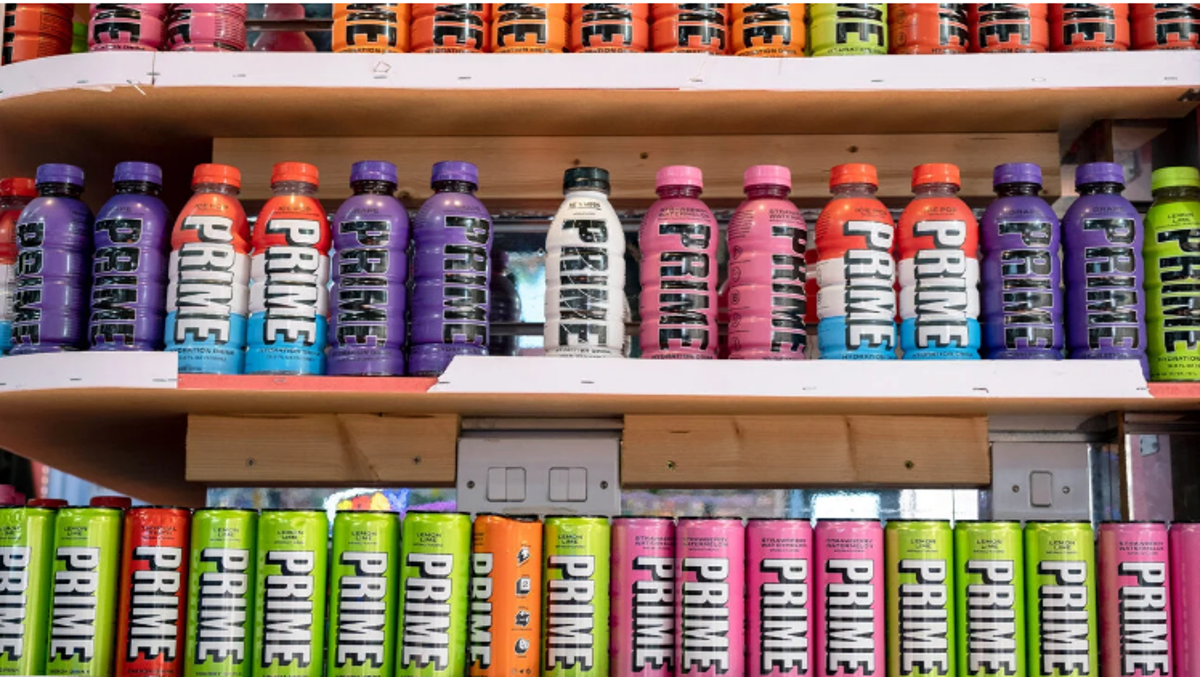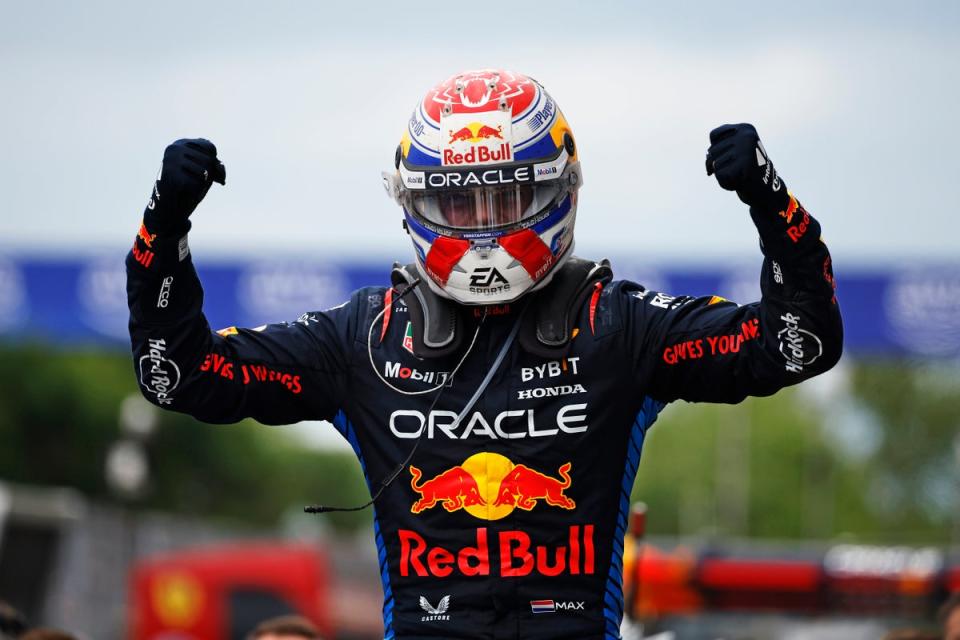Why energy drinks are the ultimate ick

Remember when Prime, the viral energy drink launched by kingpin YouTubers KSI and Logan Paul, was a thing? That brief, bizarre spell of 2022-23 when it felt like the world had collectively lost its mind?
For those over the age of 30 – or who don’t live under the same roof as a teenage boy – perhaps the phenomenon passed you by. The drink brand featured two categories (“hydration” and “energy”) and became an overnight sensation due to online hype, selling out in stores the world over.
Its popularity was such that stories spread like wildfire of people travelling huge distances to secure a bottle; with demand outstripping supply, some newsagents reportedly started selling them for hundreds of pounds. Having a Prime drink became an incomprehensible, impossible-to-achieve status symbol akin to getting your hands on a Birkin bag in the Noughties. The hysteria was fuelled by children and young people – despite the fact that each can of Prime Energy contains 200mg of caffeine, twice the amount found in a can of Red Bull, and six times more than a can of Coke.
As many outside the Gen Z and Gen Alpha cohort watched on in bemusement, it symbolised, for us, the death knell of energy drinks. Not that I’d ever thought of them as particularly cool, conjuring up as they did an unappealing yet visceral multisensory recollection: the click and hiss of the ring-pull; the stomach-turning, sweet-sour odour on the breeze; the straw-coloured hue reminiscent of dehydrated urine; the peculiarly sickly sherbet tang in your mouth (to be retasted ad infinitum with every energy drink-induced burp).
But now, they were an even more active turn-off, the equivalent of someone telling you their “hobbies” included listening to Joe Rogan podcasts and contributing to Reddit forums from their parents’ basement. After all, what did it say about a grown adult if they were prepared to spend the equivalent of a holiday on a carbonated beverage being flogged by a man who thought it appropriate to upload a video of a dead body to YouTube (Paul’s biggest controversy to date)? In certain circles, it was the tipping point that knocked energy drinks, and the people who drank them, into the official “ick” category.
This feeling has seemingly not transferred to the younger generation, though the hysteria around Prime has significantly died down. UK teenagers are the biggest consumers of energy drinks for their age group in Europe, imbibing over a litre per month more than the average young person on the continent. A third of children in the UK have caffeinated energy drinks on a weekly basis too, despite a mounting body of evidence that they pose various health risks.
In addition to high amounts of caffeine, these products often contain high levels of sugar and ingredients like taurine and guarana, thought to alter heart rate, blood pressure and other heart functions. The latest danger highlighted by researchers from the Mayo Clinic in the US is an increased risk of abnormal heart rhythms, known as arrhythmia, linked to the consumption of energy drinks.
In the data set used for a recent study, seven out of 144 patients who had suffered a cardiac arrest had drunk an energy drink shortly before their heart stopped, leading scientists to conclude that anyone with underlying heart abnormalities should avoid them. “We would be remiss if we were not sounding the alarm,” Peter Schwartz, of the Centre for Cardiac Arrhythmias of Genetic Origin and Laboratory of Cardiovascular Genetics in Milan, wrote in an accompanying editorial.
And that’s just the tip of the iceberg. Other possible impacts include anxiety, gastrointestinal problems, dehydration and tachycardia – when your heart rate exceeds 100 beats per minute despite being at rest – according to a paper from the University of Pisa and Sapienza University of Rome, published last year, called “The Dark Side of Energy Drinks”.
A separate study, published in January, concluded that teenagers who consume energy drinks are more likely to have disrupted sleep patterns and, likely as a result, have an increased risk of serious mental health conditions including anxiety, depression and suicidal thoughts. Young people’s academic performance was also found to suffer.

Despite all this, just like the vaping industry, much of the energy drink market seems aimed squarely at children and teens. Products are dressed up in colourful packaging, come in kid-friendly flavours like “strawberry watermelon” and “ice pop”, and are promoted with tie-ins designed to appeal to young people. Think Red Bull and Monster linking their brands with cool, adrenalin-fuelled extreme sports; brands like G-Fuel tying into gaming and e-sports; Pulse and Rockstar Energy Drinks sponsoring bands and music events.
Possibly it’s this strategic marketing that makes a grown adult opting for an energy drink seem a little, well, “daggy”, to use the Australian terminology popularised by Neighbours in my youth. There’s something distinctly cringe about it – the Steve Buscemi meme where he’s wearing a backwards cap, holding a skateboard and saying, “How do you do, fellow kids?” brought to life.
Whether these toxic-tasting caffeinated beverages were acting as lubricants for studying or partying, you always felt horrendous the next day
Energy drinks will forever be synonymous with student days in my head – with buying a giant bottle of “Shark” or “Kick” or whatever off-brand version of Red Bull was cheapest to chug when pulling an all-nighter to churn out a sub-par second-year essay.
Or with evenings at sticky-floored clubs where you’d be on the double-vodka/insert name of bottom-shelf energy drink combo, because they were inexplicably only £1.50 a pop. Whether these toxic-tasting caffeinated beverages were acting as lubricants for studying or partying, you always felt horrendous the next day: wired yet tired, irritable, mildly nauseous, with a fluttery, anxious heart.
Once out of university I couldn’t see any reason, other than staying awake while driving or working a night shift, to ever drink one again. Given the latest health warnings, it’s one of the more sensible decisions of my life.
I can only hope we manage to pass the torch, and that this level of ick trickles down from Gen-Xers and millennials to our younger brethren. I can only hope that energy drinks become part of the stable of products deemed irredeemably and irreversibly unhip in the years to come. Because, generational differences aside, I think we can all finally admit that they taste like garbage – and that mental health issues and heart irregularities are the furthest thing from cool.


